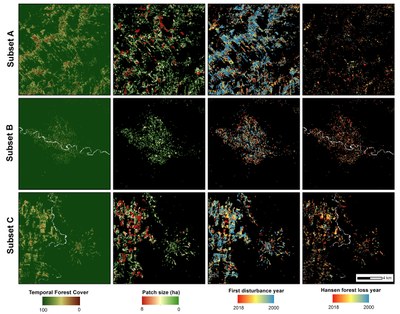Exploring differences in forest disturbances and land management practices in the Ecuadorian Amazon using Landsat time series and propensity score matching
Simon Thomsen
Ongoing deforestation of the Amazon rainforest poses a major threat to the global carbon cycle, biodiversity and local ecosystem services. Indigenous people are often affected by the environmental changes linked to deforestation as their lifestyle depends on environmental intactness of their territory. However, the role of indigenous people in the context of environmental change remains unclear and ambiguous. Contrary to their general perception as guardians of forests, the Shuar indigenous people from the Ecuadorian Amazon have shown to engage actively in deforestation for agricultural expansion, while other indigenous populations in the study area continue to practice shifting cultivation. Hence, this study seeks to investigate how forest disturbances and land use management practices differ among indigenous and non-indigenous people (so-called \emph{colonists}) in the Ecuadorian Amazon.
We use remote sensing data for detection of forest disturbances and calculation of disturbance patch size as proxies for land use management practices and apply propensity score matching for comparison of mapping results between territories of different ethnicities. Matched data reveals that average forest disturbance of colonist land is 19.4% and 16.8% on indigenous territory. Yet, we find that the value for indigenous territory changes when it is split into Shuar territory and territory of the other remaining indigenous populations (18.6% and 5.3% respectively). Similar observations are made for the relative disturbance time in disturbed pixels. Comparing forest disturbance patch sizes, matched data indicate that Shuar indigenous show larger average values than colonists while the other remaining indigenous territories show significantly lower values.
Our results point out the environmental impacts of different land use management practices through forest disturbances among ethnicities in the Ecuadorian Amazon. As stressed in other studies, it is crucial to differentiate between indigenous peoples and overcome the generalization of indigenous people as intrinsically motivated stewards of the environment. Acknowledging the heterogeneity of indigenous lifestyles is necessary for conservation planning, since otherwise indigenous people cannot be integrated into decision-making processes adequately. In the face of population growth and improving living conditions in the Ecuadorian Amazon, the role of indigenous people in conservation is likely to become more important for the future of the Ecuadorian Amazon as an ecosystem.

